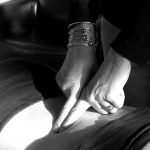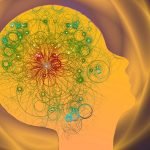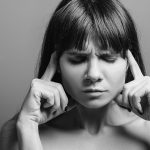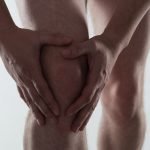Bowen Therapy: Reset Your Body and Mind
Tolle Causam
Sanja Tamburic, ND
My first experience with Bowen therapy was when I was a student at Boucher Institute of Naturopathic Medicine (BINM) and it was immediately clear to me that this was a powerful tool to add to my naturopathic toolbox. Not only did it have the potential to repair the physiology associated with acute and chronic pain; it also had the ability to reset and harmonize the nervous system. It thus had effects far beyond pain relief.
In the early years of clinical practice, I quickly became aware of how much demand there was for a modality that would help my patients not only with pain management but also with mental and emotional issues. These patients often initially presented with physical pain but revealed very quickly that the main problem actually resided in the mental/emotional realm. Hence, I needed something that would address both. I started to use Bowen therapy on these patients and immediately realized I possessed a tool that not only could quickly resolve the physical pain for my patients, but also had the ability to go deeper into shifting the mental/emotional issues. Thus my love for Bowen was born.
At present, I use Bowen in my daily practice. It is quick, cost effective, efficient, and gentle. I can rely on it to shift my patient’s pain, whether acute or chronic, in a very short span of time. In addition, my patients consistently report that they have become more relaxed, their sleep and energy have improved, and their brain fog has lifted; they have also noticed a significant shift in their ability to concentrate and that their emotional world has started to shift in a positive way.
According to Bowen authorities, Olafimihan and Hall, “Bowen is a complementary therapy that supports mind, body, and spirit through physical, mental, and psychological pathways.”1
Mind-Body Connection & Pain
Most patients and doctors look at the body as a sum of parts, where they aim to fix a particular part, just like a car engine. This mechanistic view that body and mind are separate currently permeates our medical system. Nowadays, pain is the common denominator, and living pain-free is the ultimate goal.
When we are in pain on the mental, emotional, or energetic level, it tends to show itself as physical pain. An ancient proverb states: “the body tears what eyes refuse to shed.” No doubt, there is purely physical pain, eg, from an injured ankle while playing sports, a broken bone, cuts, etc, but most of the pain these days is chronic pain. What causes chronic pain? Our emotional response to pain may be the most important determinant. Learned patters of thinking and movement often contribute to chronic pain, especially pain that is not a result of an injury or condition such as fibromyalgia.
This is why all those treatments that focus solely on the body do not work. We also know that muscles hold memory of how the body is in a healthy state, and the brain has the blueprint for a return to health.
Bowen therapy helps erase bad memories and reset the brain, giving it a subtle stimulus that then has a domino effect on many systems via the autonomic nervous system (ANS). The ANS controls over 80% of bodily functions. There are 2 parts to the ANS: sympathetic and parasympathetic. Most of us spend 80% of the time in the sympathetic mode from over-stimulation, and only 20% in the parasympathetic, relaxing mode, mainly when we sleep (assuming restful sleep). No wonder there is so much chronic pain and so many digestive issues. Healing and repair can only occur in the parasympathetic mode. Bowen technique enables that process. Shortly after the start of treatment, one will feel a patient’s muscles letting go and hear gurgling in the stomach as digestive juices are released and prepare to digest – both are signs of parasympathetic activation.
Mechanism/Physiology of Bowen Therapy
The postulated theory of the mechanism of Bowen work is that via a simple Bowen move, golgi and spindle cells in the belly of a muscle are stimulated, along with the surrounding tissue, fascia, and fluid, both intra- and extracellular.2 The move initiates a cascade of reactions, including stimulation of the ANS throughout the body and the central nervous system to the brain.1,3 These moves produce a domino effect in other areas of the body distant from the affected area (in physiology we call it segmental viscera-somatic spinal reflexes), comparable to the effect of acupuncture on moving energy along the meridians.
The postulated theory suggests that the energetic impulses stimulate healing pathways to restore the body to original state of health prior to an insult or trauma, and reduce the stimulation of pain receptors.4 The treatment reboots the body, reorganizes false patterns, and establishes new ones.

![]()

 Less is More
Less is More
Breaks between the moves are a difficult concept to grasp for many practitioners, let alone patients experiencing the treatment. However, these breaks are a fundamental part of Bowen therapy success. In my practice, I have commonly failed to achieve results when breaks were skipped or when there was a verbal interaction between patient and a doctor during the treatment. It is during this time that the body is processing the information and doing the work, as it shifts from a beta-wave to an alpha-wave state.
If you think of a body as a “bio-computer” and Bowen as a system-check that turns on the program repair, the program will run through a set of precise moves/steps and take breaks at times, before finishing. You know to not touch the mouse or the button on the keyboard before it finishes with scanning and resetting of the “bio-computer.” Doing so will interrupt the process by introducing too much additional information, and confuse the bio-computer. As a defense mechanism, the “bio-computer” will lock up. Once you reset your “bio-computer” with new patterns, it will typically run for 5-10 days unless interrupted.
Factors that can interrupt this reset include: adding more information too soon; trying to speed up the process; hot water; magnets or other energetic therapies used to treat the same kind of pain (ie, acupuncture, osteopathy, chiropractic); or resuming the activity that led to an injury in the first place.
When we play by these rules, the results are stunning.
Who Can Benefit from Bowen?
Since Bowen directly affects the nervous system, many internal health conditions in organs innervated by the parasympathetic nervous system can benefit, such as headaches, breathing or digestive problems, menstrual irregularities, and circulation problems. It is well suited for clients who cannot tolerate deep-tissue bodywork, eg, fragile or elderly people, babies and children, or patients with chronic pain such as fibromyalgia.
Bowen is an amazing therapy during pregnancy, as it can minimize some of its discomforts, promote optimal fetal positioning, and prepare the mother for birth. Likewise, for newborns, Bowen can help with breastfeeding (one particular breast move can change everything), relieve colic, and help settle babies into healthy sleeping patterns.
Those of us who have required frequent chiropractic adjustments that did not hold, often find that corrections hold for longer periods of time after Bowen treatment.
Another great example are fibromyalgia patients. They do not have any physical signs of tissue damage in the areas of pain, and no signs of inflammation; however, they are in chronic pain and the symptoms of depression, sleep disturbance, and myriad other symptoms affect their everyday life. This type of patient responds very well to Bowen. By measuring ANS activity via heart rate variability (HRV) studies, Dr Whitetaker’s study showed that these patients can gain immediate relief and improved quality of life for weeks and months after Bowen treatment.5
The list of conditions responsive to Bowen is endless, considering the fact that the treatment targets the nervous system, hence is affecting organs and functions innervated by that system. Bowen affects pain (both acute and chronic), structure (via posture, nerve, fascia, muscle, tendon, nerve, and joint), energy (via mood, and vitality), and function (respiratory, neurological, lymphatics, digestion, hormonal, and cardiovascular).
Research on Bowen
Although published scientific research on Bowen technique is limited, there is a growing compilation of studies demonstrating the ability of Bowen work to alleviate acute and chronic symptoms associated with altered states of health. In a systematic review of 15 studies on the subject, 53% showed that Bowen was effective for reducing pain, and 33% showed improvement in mobility. In addition, 5 studies showed Bowen to effectively relieve symptoms commonly associated with chronic illnesses such as multiple sclerosis.4
Here is a sampling of the research on Bowen:
- Lymphedema in breast cancer survivors: In a pilot study of 21 breast cancer survivors, Bowen work was shown to effectively reduce lymphedema associated with breast cancer treatment, as reflected in reduced arm circumference and improved range of motion. Bowen also improved mental health, quality of life, and daily functioning.6
- Frozen shoulder: This study was designed to evaluate clients’ experience of Bowen Technique in the treatment of frozen shoulder, in terms of their pain, functional ability, and well-being. All participants experienced improvements in shoulder mobility and associated function, including those with longstanding frozen shoulder. With treatment, the median “worst pain” pre-therapy score reduced from 7 (mean 7, range 1-10) to a median “worst pain” score of 1 (mean 1.45, range 0-5). Participants also experienced improvement in their activities of daily living.7
- Hamstring flexibility: An assessor-blinded, prospective, randomized controlled trial was performed on 116 asymptomatic volunteers who were randomly assigned to a Bowen treatment group or a control group. Using 3 hamstring flexibility measurements, flexibility levels were observed to increase in the Bowen group after only 1 treatment session – an improvement that persisted 1 week later.8
- Stress reduction: Over 6 weeks, 31 hospital and community health services staff were treated in a group setting with a Bowen technique designed to improve physical health and reduce stress. Quantitative and qualitative assessments revealed that Bowen successfully reduced stress and improved energy, well-being, and sleep in the participants; it also reduced pain and improved mobility.9
Patient Cases
Migraine
A 52-year-old woman presented to me with severe migraine headache with aura. The migraines made her nauseated, sensitive to light, and unable to work at her flower shop. Someone suggested to her that she try Bowen. After the first treatment, her migraine pain was significantly better, reduced by about 50%. After the second session, all of the concomitant symptoms were resolved, and she had some residual pain that was bearable. After the third session, she was free of migraines.
Sciatica
A 70-year-old overweight woman presented who suffered from sciatica and right-sided buttock pain that radiated down the leg and into the foot, though sometimes only to the knee. She had a previous history of low back pain and sciatica, and had been to many practitioners of physical medicine, with no relief. Because of the sciatica, she had experienced months of limping, difficulty walking and living in pain, and not being able to sit properly or sleep. After 2 Bowen treatments, she became pain-free.
Babies with Colic
Two newborn twins, 40 days old, were vomiting/regurgitating and crying loudly, often after feeding, and experiencing irritability and disturbed sleep. Both babies showed signs of bloating, gas, stiff stomach, and flexed knees. After 3 Bowen treatments, including a simple release of the diaphragm and a TMJ procedure, their vomiting and colic were resolved.
Frozen Shoulder
A 52-year-old nurse came in to my office complaining of a right frozen shoulder. She was unable to perform any daily activities with the affected arm. Her arm was fully flexed and adducted due to restricted range of motion (ROM) and pain on any movement. ROM in her right arm was less then 20%. At this point, I was her last chance.
I did basic Bowen moves in the first visit, not even focusing on the shoulder. On her second visit, the shoulder pain was significantly reduced and ROM was increased by at least 20%. On this visit I started the frozen shoulder protocol. On her third visit, the pain had significantly lessened and she was able to move her arm and abduct to about 50 degrees. I worked on balancing the rest of the body, as it is inappropriate to touch the treated part during resting phase. She was still improving, experiencing less pain, more ROM, and increased ability to use her limb.
After a month, it was time for another shoulder move. I was not fully satisfied at this point, even though the patient was thrilled with the results. I decided to let her go for a month and have her return for one more, perhaps final, treatment. At this last visit, she surprised me with full ROM in her right arm and a fully-resolved frozen shoulder.
Conclusion
Bowen is not only physical therapy; it also integrates mind and body, leaving a patient pain-free and deeply relaxed such that the body can heal. Despite limited scientific research, its benefits are short of being miraculous.
Successful results opens the door to further conversations about a patient’s health. Bowen occupies at least 40% of my practice. This is a very valuable and reliable technique in my toolbox, and I hope this will inspire many of you to learn it or to use it more if you already know it.
Table 1. Conditions Responsive to Bowen
| Musculoskeletal Pain | Back pain: chronic and acute
Frozen shoulder and pain Tennis elbow Carpal tunnel syndrome Arthritic pain Sporting injuries Inflexibility Hamstrings Headaches TMJ syndrome Scoliosis Migraine Postural problems Gait disorders Leg length discrepancies Plantar fasciitis Shin splints Fibromyalgia Polymyalgia rheumatica Foot and ankle problems Hammer toes Heel pain Bunions Hernia Knee and hip restrictions Pelvic problems Repetitive strain injury / Occupational overuse syndrome Sciatica |
| Respiratory Problems | Asthma
Bronchitis Hay fever Sinusitis Allergies |
| Digestive Disorders | Constipation
Colic Crohn’s disease Indigestion Bowel problems |
| Gynecological Problems | Infertility
Mastitis Premenstrual syndrome Breast lumps |
| Chronic & Acute Issues | Chronic fatigue syndrome
Balance problems Tinnitus Bed wetting in children Prostatic problems Hemorrhoids Earache and ear infections |
Note: Every condition listed here I have treated successfully in my practice.
References:
- Olafimihan K, Hall S. Bowen – moving blocked energy. Positive Health Online. 2002;74: 51-54. Available at: http://www.positivehealth.com/article/bowen-technique/bowen-moving-blocked-energy. Accessed February 15, 2018.
- Shapiro G. The Bowen technique for pain relief. Positive Health Online. 2004;106:48-51. Available at: http://www.positivehealth.com/article/bowen-technique/the-bowen-technique-for-pain-relief. Accessed February 15, 2018.
- Mechner V. The Bowen Technique. Massage Magazine. 2003;106:11-12. Available at: http://www.bowtech.com/WebsiteProj/documents/1666-Mechner-Massage%20Magazine%20Article.pdf. Accessed February 15, 2018.
- Hansen C, Taylor-Piliae RE. What is Bowenwork®? A systematic review. J Altern Complement Med. 2011;17(11):1001-1006.
- Whitetaker JA, Gilliam PP, Seba D. A gentle hands on healing method that effects Autonomic Nervous System as measured by heart rate variability and clinical assessment [Abstract]. Presented at the American Academy of Environmental Medicine 32nd Annual Conference; La Jolla, California. 1997.
- Hansen CA. A Pilot Study on Bowenwork® for Symptom Management of Women Breast Cancer Survivors with Lymphedema. [Dissertation]. University of Arizona; 2012. Available at: http://www.bowtech.com/WebsiteProj/documents/1710-Bowenwork_Women%27s_Breast_Cancer.pdf. Accessed January 15, 2018.
- Carter B. A pilot study to evaluate the effectiveness of Bowen technique in the management of clients with frozen shoulder. Complement Ther Med. 2001;9(4):208-215.
- Marr M, Lambon N, Baker J. Effects of the Bowen technique on flexibility levels: implications for facial plasticity. J Bodyw Mov Ther. 2008;12(4):388.
- Dicker A. Using Bowen technique in a health service workplace to improve the physical and mental wellbeing of staff. Australian J Holist Nurs. 2005;12(2):35-42.
Image Copyright: <a href=’https://www.123rf.com/profile_imarly’>imarly / 123RF Stock Photo</a>
 Sanja Tamburic ND, is a licensed naturopathic physician in BC, Canada. She is a graduate of BINM, where she currently teaches a Nature Cure class. With a background in both conventional and naturopathic medicine, her goal is to bridge the gap between the 2 worlds. Her current focus is on solving chronic autoimmune diseases, especially MS, using Dr Coimbra’s protocol and various mind/body modalities, including Bowen, homeopathy and total body modification (TBM). Working at Vancouver Naturopathic Clinic in beautiful BC satisfies her thirst to help her fellow Vancouverites as well as other patients from all over the world suffering from autoimmune diseases.
Sanja Tamburic ND, is a licensed naturopathic physician in BC, Canada. She is a graduate of BINM, where she currently teaches a Nature Cure class. With a background in both conventional and naturopathic medicine, her goal is to bridge the gap between the 2 worlds. Her current focus is on solving chronic autoimmune diseases, especially MS, using Dr Coimbra’s protocol and various mind/body modalities, including Bowen, homeopathy and total body modification (TBM). Working at Vancouver Naturopathic Clinic in beautiful BC satisfies her thirst to help her fellow Vancouverites as well as other patients from all over the world suffering from autoimmune diseases.










